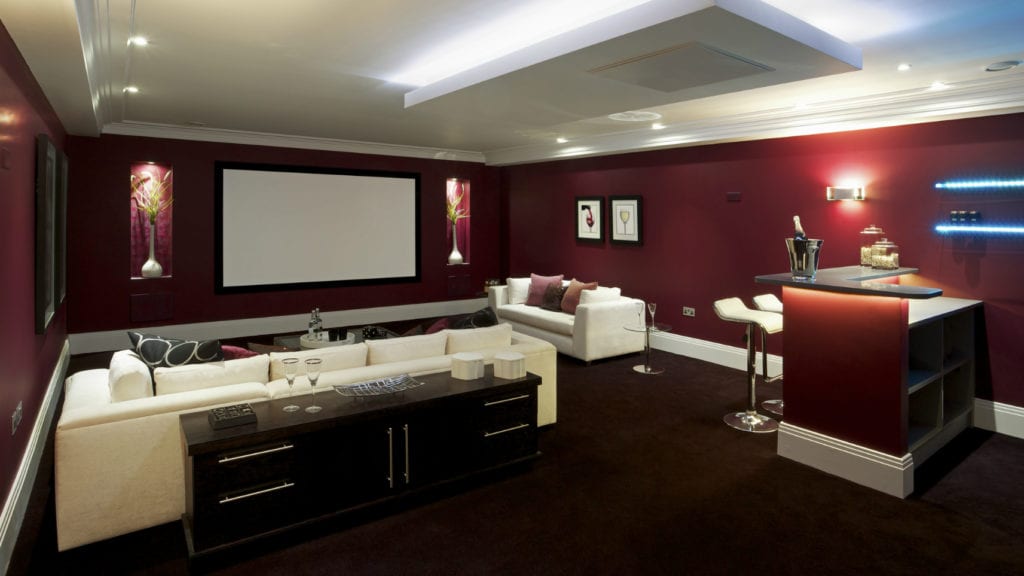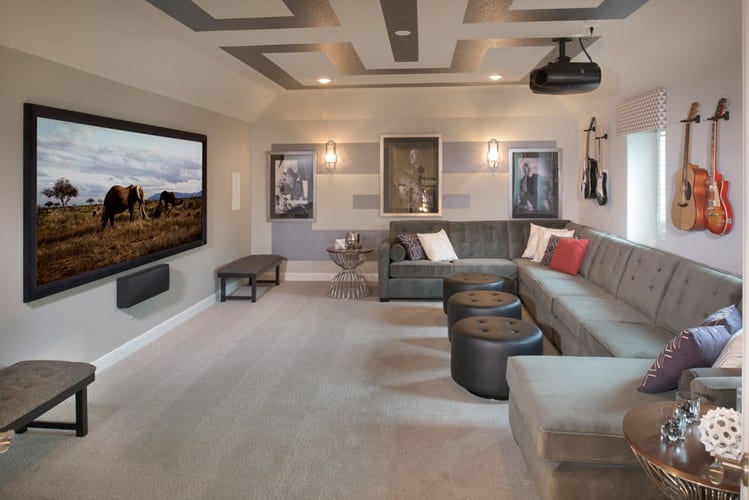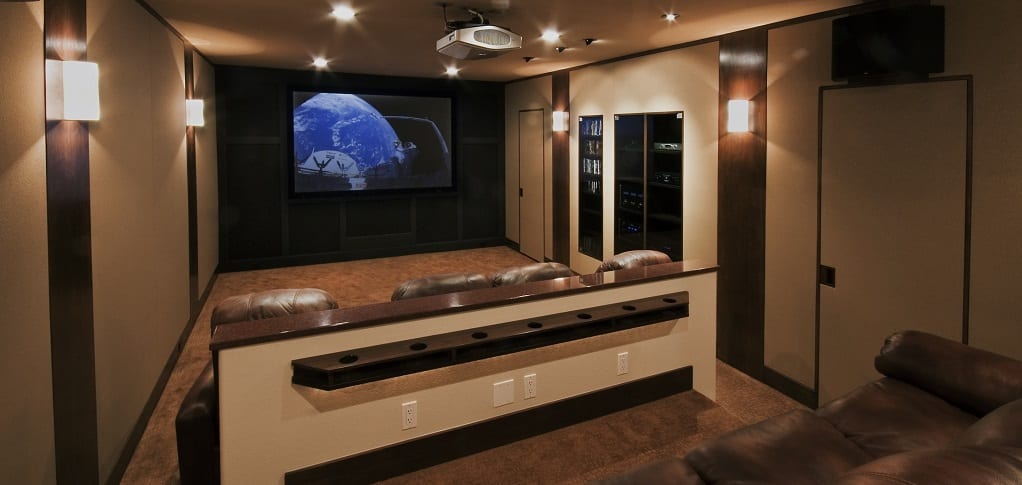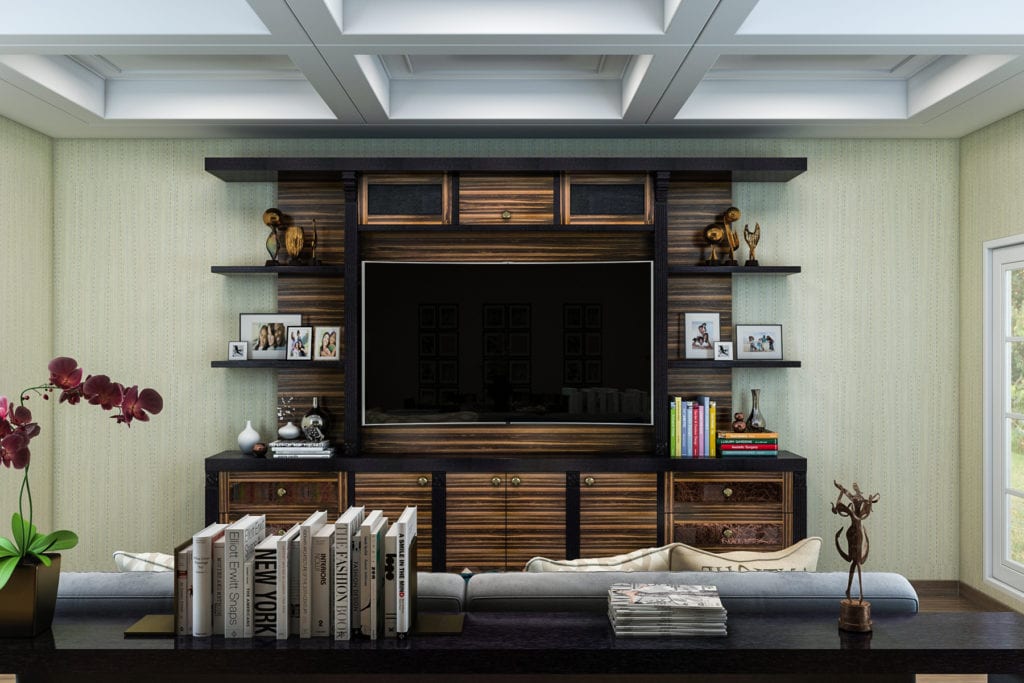No matter your budget, you can have a home theater your whole family can enjoy

In the age of Netflix, Amazon Prime and HBO Now, it is easier than ever to watch your favorite movies and TV shows in the comfort of your own home.
You don’t have to be a professional designer or tech geek when creating the perfect home theater — here’s what you’ll need to bring the cinema right to your door.
Budget

Estimate how much you can financially devote toward the home theater of your dreams. If you are working with a homebuilder, you can discuss your options with your builder’s sales pro who can walk you through the options that will fit your budget.
If you are working with a home theater specialist after your new home is completed, ask them what options are available for your budget.
“Take your time, especially if the budget is very constricted,” says Myron Hawthorne, former owner of C&M Home Theater in Corona, California. “If you are really serious about trying to put together a quality system, saving up and buying better components over time, it is going to allow you to put together something that is far more enjoyable than getting some home-theater-in-a-box solution because that is all you can afford this month.”
Even if there is no budget, setting limits and priorities is vital to the design process. When designing your home theater, prioritize the following elements to fit your budget:
The “Big” Screen

Bigger isn’t always better when choosing the right TV for your home theater. The size of the TV should be appropriate for the size of the room.
In smaller spaces, consider mounting your TV . This option conserves space and makes for a great viewpoint. A mount with a swivel feature allows for easy adjusting, however, if you plan to mount your TV above a fireplace, be careful that the TV isn’t too cramped and won’t be damaged by the heat.
If you are going with a screen, be sure it is not too big or small for the room and for the projector that you will be using.
Sound

One important element of the home cinema experience is the audio system. Designing the layout of where, how many and what speakers are placed in a room can dramatically influence the overall quality of the home theater experience. Depending on the room’s layout, speakers can be placed at different distances and angles for the best result. Test out different positions until a preference is found.
To create the ultimate surround sound experience, be sure to use a center channel speaker, right and left speakers, rear speakers and a subwoofer. For a more casual viewing experience, bookshelf speakers and sound bars create quality sound, in addition to conserving space.
Lights

Even though the room will be dark or dimly lit for its prime purpose of watching films, a great home theater still needs adequate lighting. One way to approach this element is to establish lighting zones. Avoid placing lights that are too close or shine directly onto the TV or screen.
Lighting will need to be more flexible if you decide to combine the home theater with your living room. Curtains are an easy way to make the room more theater-like and can be left open when not watching movies.
For more ornate home theaters, consider LED floor lighting or an automated dimmable light system to create ambiance.
Theater Design

The following are a few additional design tips that can help pull your home theater together:
The Room
The foundation of a great home theater relies on choosing the right room. Initially, one might think an open, wide room would be great for entertaining. For any purpose other than a home theater it could be, but the best space for a home theater is a room that is rectangular and closed-off. This type of room offers the best placement space for the screen in the center with seating aligned in front of it and a surround sound system.
For the space, hard surfaces, such as glass and tile, should be avoided because they bounce sound around the room, making it distorted. Soundproofing walls, ceilings and floors keeps the noise in the room while absorbing sound for better quality. An alternative to soundproofing is to use softer materials such as carpeted floors, rugs or soft curtains on the walls and ceilings.
Storage
Think about storage and how it will be used daily as well as entertaining. Even though most movies and music are digital today, take inventory of your entire collection, including DVDs, CDs and VHS tapes (if you still have them). Also include equipment boxes, media players, video game consoles and remotes. Taking inventory of your collection allows for sufficient planning for the storage needed.
“It’s important to design your home theater with enough space to store your entire collection,” says Dan Moyer Jr., former national director of social media for Closet Factory. “Whether it’s with a slide-out rack that keeps everything concealed, or an exposed wall unit with LED accent lights, it’s not always about creating more space for your stuff, but learning how to maximize the space you already have.”
Seating
Depending on the size of the room, different kinds of seating work better than others. For a larger room, rows of recliners can heighten the authentic cinema atmosphere. Sectional sofas are good for getting the most seating out of a designated space and enhance conversation and the group experience. Every home theater should establish an overall comfortable viewing distance from seating to the screen.
“You don’t want people to feel like they are stuck in the first row of a movie theater, but they also shouldn’t be struggling to make out what they are watching,” says Steve Feldman, former director of sales at BDI Furniture in Chantilly, Va., which sells home theater furniture. “A simple rule to follow is that the distance from the TV to the seating should be at least double the diagonal measurement of the screen size.”

Amy Olivarez is a former digital content intern for NewHomeSource.com. She is a graduate of Texas Tech University with a major in Electronic Media Communications.

 How to Achieve a High-End Designer Look For Less
How to Achieve a High-End Designer Look For Less